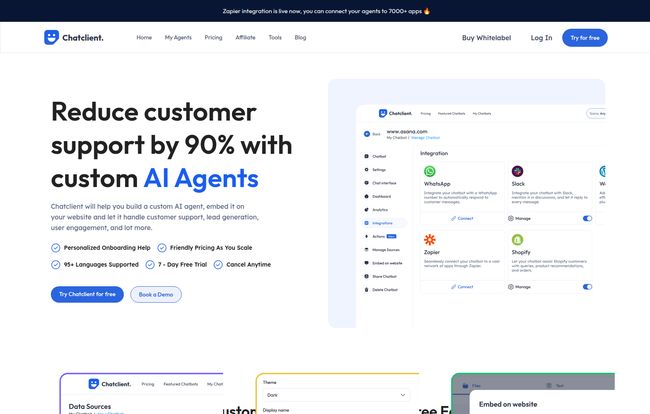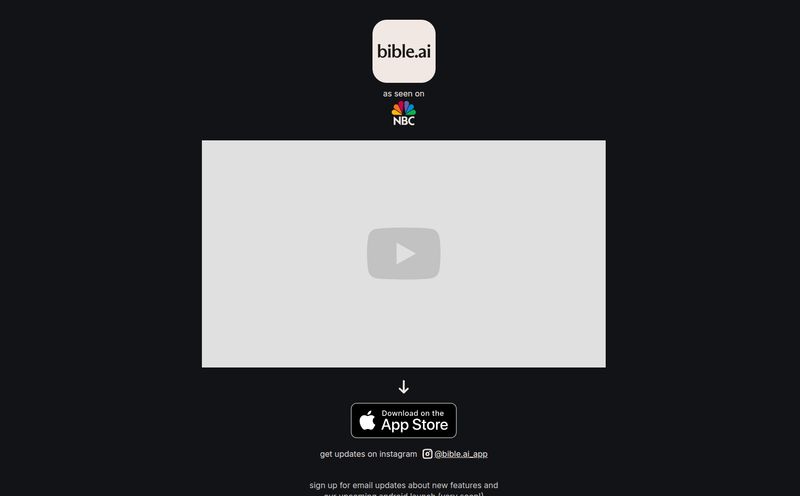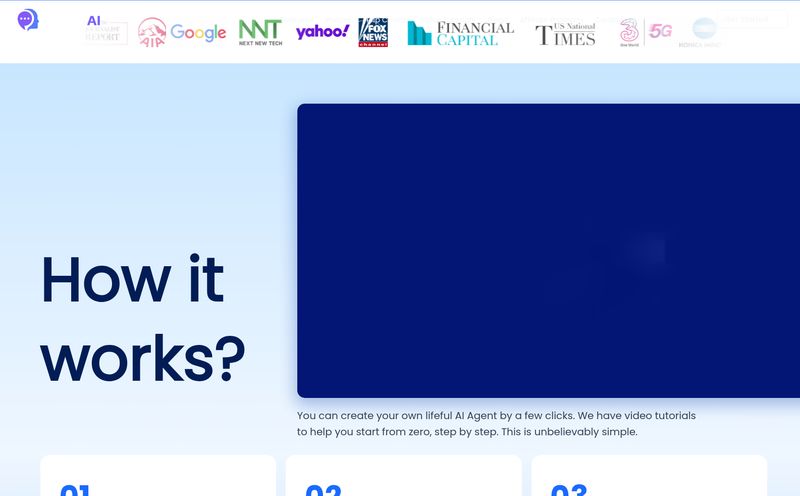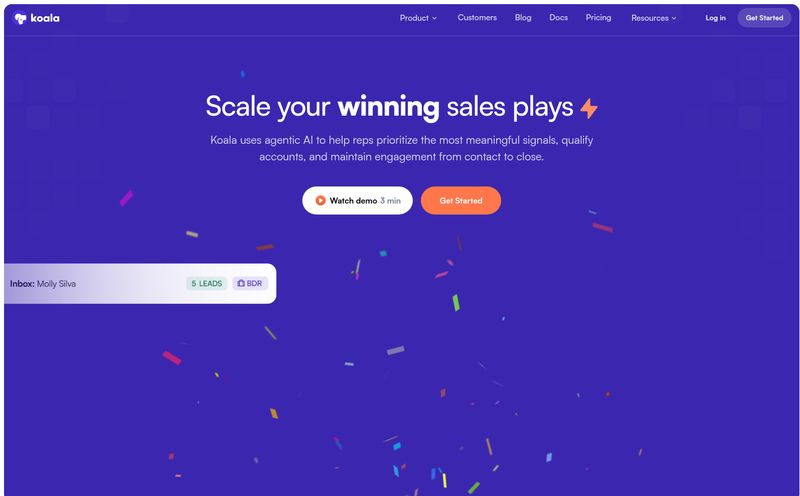If you run a website, you’re probably drowning in questions. The same questions. Over and over. “What are your hours?” “Do you ship to Antarctica?” “Can your product teach my cat to yodel?” Okay, maybe not that last one, but you get the picture. For years, the dream has been a 24/7 assistant who knows your business inside and out, never calls in sick, and works for pennies. Well, the AI boom might have just delivered.
I’ve been testing out a ton of these new AI chatbot builders lately, and one that keeps popping up on my radar is Chatclient. It promises to let you train an AI on your own data and stick it on your website in minutes. It sounds almost too good to be true, right? So, being the curious SEO and traffic guy I am, I had to get my hands dirty and see if it lives up to the hype.

Visit Chatclient
So, What on Earth is Chatclient Anyway?
Imagine you could clone a super-smart, incredibly helpful version of your best employee. Now, imagine that clone lives in a little chat bubble on your website, ready to answer visitor questions instantly. That's pretty much Chatclient in a nutshell.
It’s a platform that lets you build a custom AI agent by “feeding” it your own information. You can upload documents, paste in text, or even just give it a link to your website and let it crawl the pages. The AI, powered by models like ChatGPT, digests all that information and becomes a dedicated expert on your stuff. No more generic, robotic answers. This is about creating a bespoke experience. It's less of a generic chatbot and more like a custom-trained digital concierge for your brand.
The Features That Actually Matter
A features list can be a snoozefest, so let’s talk about what I found genuinely useful during my testing.
Building Your AI's Brain: The Training Process
This is the core of it all. Chatclient lets you ingest data from multiple sources. I started by just giving it my blog’s URL. It scraped the content pretty fast. Then, I uploaded a few product one-sheets and an internal FAQ document. The ability to mix and match sources is fantastic. You’re not just limited to what’s public on your site.
A word of warning, though, and this applies to any AI tool: the quality of your agent is 100% dependent on the quality of your training data. Garbage in, garbage out. If your website content is confusing or your documents are out of date, your chatbot is going to be just as confused. Take the time to clean up your source material first. You’ll thank me later.
Plug-and-Play Simplicity for Your Website
Once your agent is trained, getting it on your site is ridiculously simple. It gives you a small snippet of code that you can copy and paste into your website’s header or footer. If you've ever installed Google Analytics or a Facebook Pixel, you can handle this. It literally took me less than five minutes. The chat widget just appears, ready to go. No messing with complex APIs unless you want to (which is an option on higher-tier plans).
Plays Well With Others: Key Integrations
A tool that lives on an island is a useless tool. I was really pleased to see that Chatclient integrates with the big players like Slack and, more importantly, Zapier. The Zapier integration is the golden ticket here, because it means you can connect your chatbot to thousands of other apps. For example, you could set it up so that when the chatbot captures a lead’s email address, it automatically adds them to your Mailchimp list or creates a new lead in your Salesforce CRM. That’s how you turn a simple Q&A bot into a powerful automation engine.
Making It Your Own: Customization and Whitelabeling
Nobody wants a chatbot that screams “I’m a third-party tool!” Chatclient gives you a good amount of control over the look and feel. You can change the colors to match your brand, tweak the welcome message, and set up suggested questions to guide users. On the Pro plan, you can even remove the “Powered by Chatclient” branding, which is a must-have for agencies or businesses that want a completely seamless user experience. It's a small detail, but one that adds a layer of professionalism.
Let's Talk Money: A Look at Chatclient's Pricing
Alright, the all-important question: how much is this going to cost? Chatclient uses a tiered model, which I appreciate because it lets you start small and scale up. Here’s a quick rundown of their yearly plans:
- Free ($0/year): This is your test-drive plan. You get 15 message credits (that’s total, not per month), 1 agent, and can train it on up to 500k characters. It's enough to get a feel for the platform and see if it works for you, but you'll burn through those credits fast if you get any real traffic.
- Hobby ($120/year): This feels like the ideal starting point for a solopreneur or a small blog. You get a much more reasonable 2,000 message credits per month, 2 agents, a bigger character limit, and you can train it on unlimited website links.
- Standard ($600/year): This is where it gets serious. Aimed at small businesses, you get 10,000 message credits/month, 5 agents, 3 team members, and access to the API and integrations like Zapier. For most growing businesses, this is probably the sweet spot.
- Pro ($2,400/year): The big leagues. This plan is for larger teams or agencies managing multiple clients. It bumps you up to 40,000 credits, 10 agents, 5 team members, and lets you remove the Chatclient branding.
Honestly, the Standard plan seems to offer the most bang for your buck if you’re serious about using this for lead generation or support, mainly because it unlocks the integrations.
The Good, The Bad, and The AI: An Honest Breakdown
No tool is perfect. Let's weigh the pros and cons from my perspective.
What I really liked was the ease of use. You can genuinely go from zero to a functioning, custom-trained chatbot on your site in under an hour. The multi-language support (over 95 languages!) is also a massive plus for businesses with an international audience. And having a free plan, however limited, is always a great way to dip your toes in without commitment.
On the flip side, the limitations of the free plan are... well, limiting. 15 message credits is barely enough to run a proper test. And of course, the agent's accuracy is a double-edged sword. It's only as good as the data you give it. This isn't a Chatclient problem specifically, its an AI problem in general, but it’s something you need to be aware of. You can't just point it at a messy website and expect magic to happen.
My Final Verdict: Is Chatclient the Right Move for You?
So, after all this, would I use Chatclient? Yes, absolutely. But with a caveat.
If you're a small business owner, a marketer, or a solopreneur looking for an easy-to-implement solution for 24/7 customer support and automated lead capture, Chatclient is a fantastic option. It lowers the barrier to entry for creating a genuinely helpful AI assistant for your website. The setup is a breeze, and the potential to automate workflows through Zapier on the Standard plan is huge.
Who is it not for? If you're an enterprise-level company with incredibly complex security requirements or need a deeply integrated, custom-coded solution, you might need something more robust. But for the 90% of us in between, Chatclient hits a really nice sweet spot between power and simplicity.
It’s not just a fancy tech toy; it’s a practical tool that can improve user experience, boost engagement (a nice little signal for SEO), and free up your time to work on things a robot can't. And in this economy, that's a win.
Frequently Asked Questions About Chatclient
1. Is Chatclient difficult to set up on my website?
Not at all. If you can copy and paste, you can do it. Chatclient provides a simple JavaScript snippet. You just paste it into the HTML of your site (usually before the closing `` tag), and the chat widget appears. It’s compatible with virtually any website platform like WordPress, Shopify, Webflow, etc.
2. How good is the AI at answering questions accurately?
It's surprisingly good, provided you give it high-quality, clear, and accurate information to train on. If your source documents are well-structured and your website content is straightforward, the agent will be very accurate. If your data is a mess, the agent's answers will reflect that.
3. Can I use Chatclient for lead generation?
Yes, and it's one of its best use cases. The chatbot can be programmed to ask for a user's name, email, or phone number. When combined with the Zapier integration on the Standard plan, you can automatically send those leads directly into your CRM or email marketing software.
4. What happens if I go over my monthly message credits?
Based on their model, if you exceed your monthly message limit, the service may be paused until the next billing cycle, or you may need to upgrade your plan. It’s best to choose a plan that gives you a comfortable buffer based on your website traffic.
5. Can I have the chatbot speak in different languages?
Yes! This is a major strength. Chatclient supports over 95 languages. You can create an agent that can interact with your global user base in their native tongue, which is a huge plus for user experience and international SEO.
6. What's the main difference between the Hobby and Standard plans?
The biggest jump is integrations and API access. The Hobby plan is great for basic Q&A, but the Standard plan is where Chatclient becomes a true business tool. The ability to connect to other software via Zapier and the higher message/agent limits make it suitable for a business that relies on the chatbot for daily operations.
Wrapping It All Up
Look, the wave of practical AI tools is here, and it's changing how we do business online. Platforms like Chatclient are democratizing technology that used to be reserved for big companies with deep pockets. Being able to build and deploy a custom AI expert for your brand in less time than it takes to watch a movie is, frankly, amazing. While it has its limitations, its ease of use and powerful features make it a compelling choice for anyone looking to level-up their website's engagement and support. Give the free plan a spin—you've got little to lose and a whole lot of time to potentially gain back.



